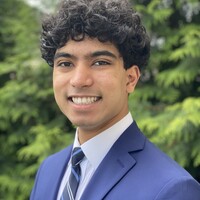3D Anisotropic Scattering Transformation
Our work is on the scattering transform, a statistical method similar to a convolutional neural network that creates summary statistics for a field with high computational efficiency. Scattering transforms use wavelets, localized filters, to get information from a field. We work to extend these wavelets in 3D to have the property of directionality. Directionality allows the wavelet to capture non-Gaussian information and local interactions in a field. This property exists for wavelets in 2D and has been implemented in python packages, and we extend these properties to 3D, using work done by Yves Wiaux. We also implement this into the Kymatio python package. We then apply our new wavelet on the quantum chemistry QM7 data set, which contains data for rotationally invariant molecules. Through this analysis we demonstrate that our wavelet performs just as well on the non-directional quantum chemistry data as previously existing 3D wavelets. We then apply our wavelet to the Quijote Large Scale Structure Simulation, which contains simulated directional data on the structure of the universe for different cosmological parameters. We perform a scattering transformation on this data at a redshift 0 for s8, Om, and fiducial realizations of the cosmology. We then took our scattering coefficients—the summary statistics from the scattering transformation—and ran a fisher matrix analysis to demonstrate the s8-Om tension. Our wavelet was well able to constrain the cosmological parameters and was convergent. But, further work is needed to better the analysis and compare it to existing methods. We build upon our work by using our wavelet for image generation, similar to previous work done by Sihao Cheng and Brice Menard. We take a 3D field, extract the scattering coefficients from that field, and then perturb a random field until it has the same scattering coefficients as the original field. This allows us to see different realizations of a field with the same inherent properties captured by the scattering transformation. Our generation is able to capture key elements of the original field; however, there is more work to be done on the Pytorch implementation to better match the properties of the generated fields.

Comments